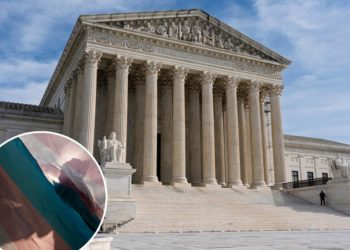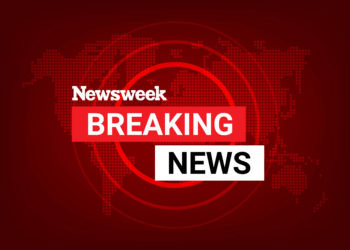Father’s Day can sometimes seem like an afterthought in the late-spring holiday lineup: third place behind Mother’s Day and Memorial Day, a mere warm-up barbecue before the Fourth of July. But the occasion wasn’t invented merely to sell greeting cards, coffee mugs, and last-minute neckties. On the contrary, when Father’s Day became a national holiday in 1972, it was intended—though, badly—to address the most contentious and persistent issues in American history and politics. Its origins lie in the social movements of the 1960s, in stunted efforts to fight deep inequalities of race and class, and in a previous generation’s attempt to solve a perceived crisis of masculinity and fatherhood through ambitious, though ultimately unrealized policies to support families.
This story starts in the fall of 1964, when a middle-aged father and mid-level federal appointee named Daniel Patrick Moynihan hit on what he believed to be the solution to America’s racial conflict in his sleep. Following the passage of the Civil Rights Act in July, many of the bill’s champions, including Martin Luther King Jr., argued that new laws weren’t enough to end centuries of discrimination. Something more substantive was needed. That November, Moynihan, then an ambitious Assistant Security in the Labor Department with three young children of his own, woke up at 4 a.m. certain that the key to avoiding more racial unrest, and even revolution, was to help Black fathers stay with their families.
Moynihan spent much of the next year working on a study, published in the spring of 1965 under the title The Negro Family: The Case for National Action. Initially confidential and anonymous, the document quickly became indelibly identified with its author: The Moynihan Report.
In the six decades since its publication, the Moynihan Report has come to symbolize how assumptions of racial difference have skewed even liberal policies aiming for social equality. Fair as these charges are, Moynihan’s initial thinking was as much about biased views on masculinity and Freudian psychology as it was about race, and it was shaped by his own experiences with fatherhood.
Born in 1927, Moynihan had grown up in New York City during the Depression, the eldest child of a struggling Irish-American family. When Moynihan was 10, his father, an alcoholic, abandoned them to move to California. Moynihan, his siblings, and his mother were left to scramble for food, work, and shelter. Sometimes they stayed in an apartment for only a month before moving on.
Read More: What It Means to Be a ‘Good’ Father in America Has Changed. Here’s How
They had few other options. Around the turn of the 20th century, fearing that immigrant children were overwhelming American cities, many local and state governments started requiring paternal child support. Yet enforcement was impossible, for there was no way to track down absent and delinquent fathers. Public benefits were reserved primarily for the families of veterans, and private charity went almost exclusively to widows, for even do-gooders were loath to let absent fathers off the hook by helping their children.
While shining shoes and selling papers to help his mother and siblings, Moynihan graduated from his East Harlem high school at 16. In 1944, the Navy sent him to college, and it was then that he started graduate work on the international labor movement, which led in 1950 to a Fulbright fellowship at the London School of Economics. For Moynihan, succeeding in England meant finding “a wife and a job—simple enough.” To help, he started psychoanalysis.
These private sessions are recorded in Moynihan’s London journals, housed today at the Library of Congress. The journals contain graphic accounts of the inner turmoil around sexuality and fatherhood that Moynihan hoped to resolve through analysis, leading to marriage, family, and a successful career.
In sessions, Moynihan dug up old memories of his father, all of them good. Quickly, his analyst concluded that Moynihan wanted to love his father despite his abandonment; he was grateful to his mother but feared her anger. Female authority had become entangled with the pain of his father’s absence. Between appointments, Moynihan was “literally overwhelmed by simple tender childish emotions” when he saw fathers and children together. When Moynihan had a month left in London, he dreamed that he woke up sobbing because he wanted his father to come back. His analyst said this was the breakthrough. Moynihan had faced his father and was finally ready to honor him.
Soon after Moynihan got back to the United States in 1954, he married Elizabeth, who would be his partner in and out of politics for the rest of his life. They named their youngest John, after Moynihan’s still absent and estranged father. Through friendly connections, Moynihan got a post in Kennedy’s Labor Department.
In Washington, Moynihan cast himself as an expert on and advocate for boys and men. Following his dreamlike revelation in November 1964, Moynihan got the go-ahead to look into helping Black fathers and families specifically. He reached out to Kenneth Clark, a distinguished Black psychologist and professor. Through Clark, Moynihan began to see, as his now-infamous phrase put it, a “tangle of pathology” ensnaring Black families—a complex set of social disadvantages that perpetuated racial inequality.
Moynihan saw divorce and illegitimacy increasing in the United States, but not equally everywhere. “Fatherless nonwhite families,” he noted, were strikingly up. Most Black children lived at some point with only one parent at home. Most also received federal welfare, which was only available if one parent was absent or incapacitated. Merging these statistics together, Moynihan concluded that a disproportionate number of Black fathers were not living at home with their children.
Why were some Black men not living with their children? Moynihan’s answer had two parts. First was the history of slavery. Scholar Stanley Elkins, comparing American slavery to the concentration camps of Nazi Germany, argued that enslavement had forced Black men into “infantile regression,” because they were treated as “boys” and denied the “honorific attributes of fatherhood.” For Moynihan, restoring the “viability” of the Black family meant reversing the legacy of slavery by boosting Black men.
The second, compounding problem, according to Moynihan, was the welfare system—begun to aid families of dead and injured veterans, it unintentionally encouraged men to leave. Moynihan concluded that the result of these conjoined histories was a Black culture of matriarchy that, he thought, had negative consequences for the children who grew up in it, especially given the “dominant” culture of patriarchal masculinity.
In June 1965, Johnson incorporated Moynihan’s ideas into a well-received speech at Howard University. But quickly, the political ground shifted. Johnson committed more resources to Vietnam, straining the budget. Then Moynihan’s full report, still anonymous, was leaked to the press. On August 9, Newsweek identified him as the author. Two days later, the violent arrest of a Black driver by a white police officer developed into a widespread protest centered in Watts, a Black neighborhood of Los Angeles.
Moynihan was hailed as a prophet who had foretold the summer’s violence by some, and condemned as a racist and misogynist who was only “blaming the victim,” especially Black women, by others. As scholar Angela Davis pointed out, the Black single mothers of America did not constitute a matriarchy in any sense that implied a preponderance of social power.
Moynihan’s defense was a simplified, even naive version of his own family story. “I grew up in Hell’s Kitchen,” he told the New York Times in December 1965. “I know what this life is like.” Among other blind spots, he seemed not to have considered that his college scholarship, fellowship in England, and friendly connections within the Kennedy administration might be opportunities that would have been near impossible for a person of color to receive. In 1966, feeling like an outcast from power in Washington, Moynihan took a position at Harvard, where he would lead a center for urban studies.
That June, the Johnson administration finally did something for fathers, as Moynihan had proposed. In the preceding years, the President had used his legislative savvy to shepherd civil rights and voting rights into law. Now Congress gave official recognition to what had long been an informal tradition, a distant afterthought to the widely observed Mother’s Day. “In the homes of our Nation, we look to the fathers to provide the strength and stability which characterize the successful family,” Johnson announced, Moynihan’s phrases still echoing. By special resolution, Father’s Day would be officially celebrated on the third Sunday in June.
In 1969, Moynihan took a leave from his post at Harvard and went back to work on family policy and welfare reform in the Nixon administration. He succeeded in convincing Nixon that a guaranteed basic income would help encourage fathers to remain with their families. Nixon was in favor, but the proposal was cut down in Congress as an undeserved handout. With Moynihan’s most ambitious proposals to support men and families scuttled again, Nixon, too, was left only with symbolic gestures and formalities. In 1972, he went one step further than Johnson and declared Father’s Day a permanent national holiday. [x]
But of course, Father’s Day hardly resolved the problems it was meant to address. Today, we face renewed questions about masculinity, fatherhood, and family. Men are in trouble. Parents need help. This Sunday, we might take the opportunity to revisit the origins of the holiday and think again about other ways to help all men and families thrive. At the core of Daniel Patrick Moynihan’s agenda was the belief that easing economic burdens would create more room for families to grow together. Even the most thoughtful gifts, cards, and flowers aren’t enough to feed and educate a family, to pay for childcare, healthcare, and housing, plus maybe a dinner out and the occasional vacation. Perhaps instead, the time has come for policies that will reduce the financial pressures that all families face but weigh disproportionately on those who can least afford to bear them. The world’s greatest dad, and mom, deserve it.
The post The Surprisingly Radical History of Father’s Day appeared first on TIME.




